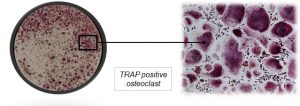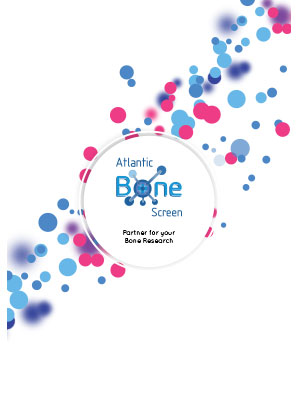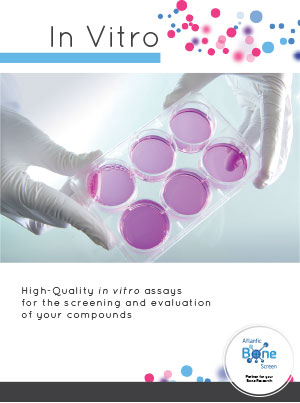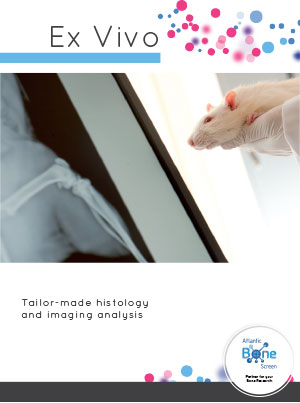Bone remodeling occurs throughout life and this process is carried out by osteoblasts and osteoclasts, which are responsible for the synthesis and resorption of bone, respectively. In order to maintain bone homeostasis, bone resorption and formation must be tightly regulated.
An imbalance between osteoblast and osteoclast activity results therefore in skeletal abnormalities such as osteoporosis. Compounds demonstrating any ability to modulate this balance between resorption and formation of bone would be of interest to treat such diseases.
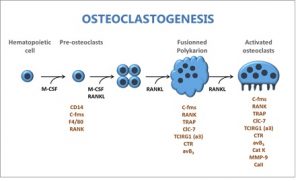
In this context, we can assess any direct in vitro effects of compounds on human osteoclasts using an in vitro osteoclastogenesis protocol from human CD14+ monocytes (use of a pure population of osteoclast precursor cells).
- Evaluation of the effect of the compounds on osteoclast formation (osteoclastogenesis) with analysis such as TRAP staining…
- Evaluation of the effect of compounds on mature osteoclasts with analyses such as resorbed area evaluation, CTX release…
Specific protocols can be designed and implemented such as gene expression analysis (NFATc1, TRAP, RANK, CatK..), or imunocytochemistry for compound internalisation evaluation.
